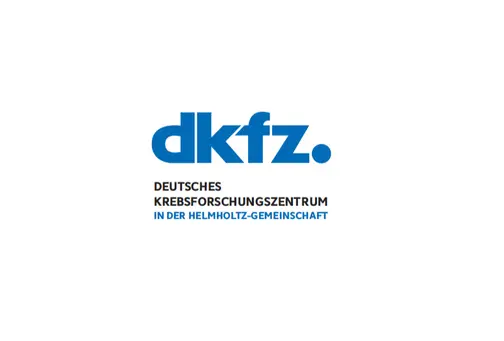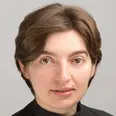Computational Patient Models
Our research team is exploring algorithms, designs, and implementation of digital patient twins - tailored for radiotherapy. At the interface of multi-modal longitudinal imaging, biophysical organ and tissue modeling, and artificial intelligence we investigate subtle features indicating treatment response using spatio-temporally resolved in-silico patient replicas.

Mission
We are a team of physicists, medical informaticians, data scientists, mathematicians, and radio-oncologists working togetherto make future cancer treatments more precise, more personal, and more effective.
Our research is dedicated to virtual in-silico patient models - digital twins of real patients - that can simulate how tumor and healthy tissue respond to radiotherapy. The first challenge for technically precise radiation therapy lies in adapting dose delivery to deformations in the patient’s anatomy induced by motion and physiological changes. This is measured by on-board imaging modelities, like CBCT or MRI: But, computer vision methods are needed to extract the meaning from these voxel data. The second challenge is to detect subtle changes in longitudinal imaging, which allows us to test treatment outcome prediction models or accumulate local dose effects for a potential re-irradiation.
Our vision is to create a virtual patient model, serving as a proxy for treatment simulation by accumulating the physical dose and predicting the therapeutic effect of the planned treatment. This empowers treating physicians to tailor the treatment to the specific needs of the patient before irradiation and during the treatement course. Automated intelligent methods help to monitor anomalies in this complex 4D context in real time, where human experts lack user interfaces and assessment time. In-silico model development, advancements in imaging and computer technology, and our passion for unusual solutions are our tools to establish future support in each individual fight against cancer.
Ongoing Projects
Team
Alumni
Marc Buckmakowski (M.Sc. physics) | Dr. Alexandra Walter (Dr. phil) | Dr. Ama Katseena Yawson (Dr. sc hum) | Cassandra Krauses (intern) | Jule Lea Katzenberger (B.Sc. physics) | Reza Seyed Seif (intern) | Sina Thürwächter (B.Sc. MI) | Florian Ebert (HiWi) | Jakob Kreft (B.Sc. physics) | Dr. Pasit Jarutatsanangkoon (postdoc) | Mark Arndt (M.Sc. physics) ❘ Mikulas Bankovic (M. Sc. computer science) ❘ Dr. Cornelius Bauer (Dr. rer nat) ❘ Tom Vichtl (M.Sc. physics) ❘ Katrin Weigand (B.Sc. physics) ❘ Eric Volkmann (B.Sc. physics) ❘ Stephen Schaumann (M.Sc. physics) ❘ Mohammad Amin Rashid (M.Sc. biomedical engineering) ❘ Peter Lysakovski (M.Sc. physics) ❘ Dr. Kathrin Bartelheimer (Dr. rer nat) ❘ Rachid Zeghlache (intern) ❘ Charlotte Bordt (B.Sc. physics) ❘ Dr. Hendrik Teske (Dr. sc hum) ❘ Dr. Markus Stoll (Dr. ing) ❘ Dr. Paul Mercea (Dr. sc hum) ❘ Angelika Czekalla (M.Sc. MI) ❘ Julian Suleder (M.Sc. MI) ❘ Simon Kirchhof (M.Sc. physics) ❘ Luis Fernando Paredes Ocampo (M.Sc. physics) ❘ Johannes Merz (M.Sc. MI) ❘ Daniel Schaubach (M.Sc. MI) ❘ Thomas Wollmann (B.Sc. MI) ❘ Jan Meis (HiWi) ❘ Anna Storz (M.Sc. MI) ❘ Nico Schweiger (M.Sc. MI) ❘ Sarah Grimm (M.Sc. MI) ❘ Henry Müssemann (B.Sc. MI) ❘ Angelika Laha (M.Sc. MI) ❘ Dr. med Eva Stoiber (RO)
Selected Publications
Walter A, Bauer CJ, Yawson AK, Hoegen-Saßmannshausen P, Adeberg S, Debus J, Jäkel O, Frank M, Giske K. 2025 Accuracy of an articulated head-and-neck motion model using deep learning-based instance segmentation of skeletal bones in CT scans for image registration in radiotherapy. Computer Methods in Biomechanics and Biomedical Engineering: Imaging & Visualization 2025, 13(1). https://doi.org/10.1080/21681163.2025.2455752
Yawson AK, Salem H, Seidensaal K, Welzel T, Klüter S, Paul KM, Dorsch S, Beyer C, Debus J, Jäkel O, Bauer J, Giske K. 2025 Enhancing U-Net-based Pseudo-CT generation from MRI using CT-guided bone segmentation for radiation treatment planning in head & neck cancer patients. Phys Med Biol. 70(4). https://doi.org/10.1088/1361-6560/adb124
Walter A, Hoegen P, Stanic G, Rodrigues JP, Adeberg S, Jäkel O, Frank M, Giske K. 2024 Segmentation of seventy-one anatomical structures necessary for the evaluation of guideline-conform clinical target volumes in head and neck cancers. Cancers 2024, 16(2), 415. https://doi.org/10.3390/cancers16020415
Yawson AK, Walter A, Wolf N, Klüter S, Hoegen P, ADebus J, Frank M, Jaekel O, Giske K. 2024 Essential parameters needed for a U-Net-based segmentation of individual bones on planning CT images in the head & neck region using limited datasets for radiotherapy application. Phys Med Biol. 69(3). https://doi.org/10.1088/1361-6560/ad1996/
Bauer CJ, Teske H, Walter A, Hoegen P, Adeberg S, Debus J, Jaekel O, Giske K. 2023 Biofidelic image registration for head and neck region utilizing an in-silico articulated skeleton as a transformation model. Phys Med Biol. 68(9):095006
Niebuhr NI, Johnen W, Echner G, Runz A, Bach M, Stoll M, Giske K, Greilich S, Pfaffenberger A. 2019 The ADAM-pelvis phantom - an anthropomorphic, deformable, and multimodal phantom for MRgRT. Phys Med Biol. 64(4):04NT05
Stoiber EM, Bougatf N, Teske H, Bierstedt C, Oetzel D, Debus J, Bendl R, Giske K. 2017 Analyzing human decisions in IGRT of head-and-neck cancer patients to teach image registration algorithms what experts know. Radiat Oncol. 12:104
Teske H, Bartelheimer K, Meis J, Bendl R, Stoiber EM, Giske K. 2017 Construction of a biomechanical head and neck motion model as a guide to evaluation of deformable image registration. Phys Med Biol. 62(12):N271-N284
Teske H, Bartelheimer K, Bendl R, Stoiber EM, Giske K. 2017 Handling images of patient postures in arms up and arms down position using a biomechanical skeleton model. Current Directions in Biomedical Engineering 3(2):469-472
Bartelheimer K, Teske H, Bendl R, Giske K. 2017 Tissue-specific transformation model for CT-images. Current Directions in Biomedical Engineering 3(2):525-528
Stoll M, Stoiber EM, Grimm S, Debus J, Bendl R, Giske K. 2016 Comparison of Safety Margin Generation Concepts in Image Guided Radiotherapy to Account for Daily Head and Neck Pose Variations. PLoS One 11(12):e0168916
For a full list of articles, theses etc. from the division, see here.
Get in touch with us
